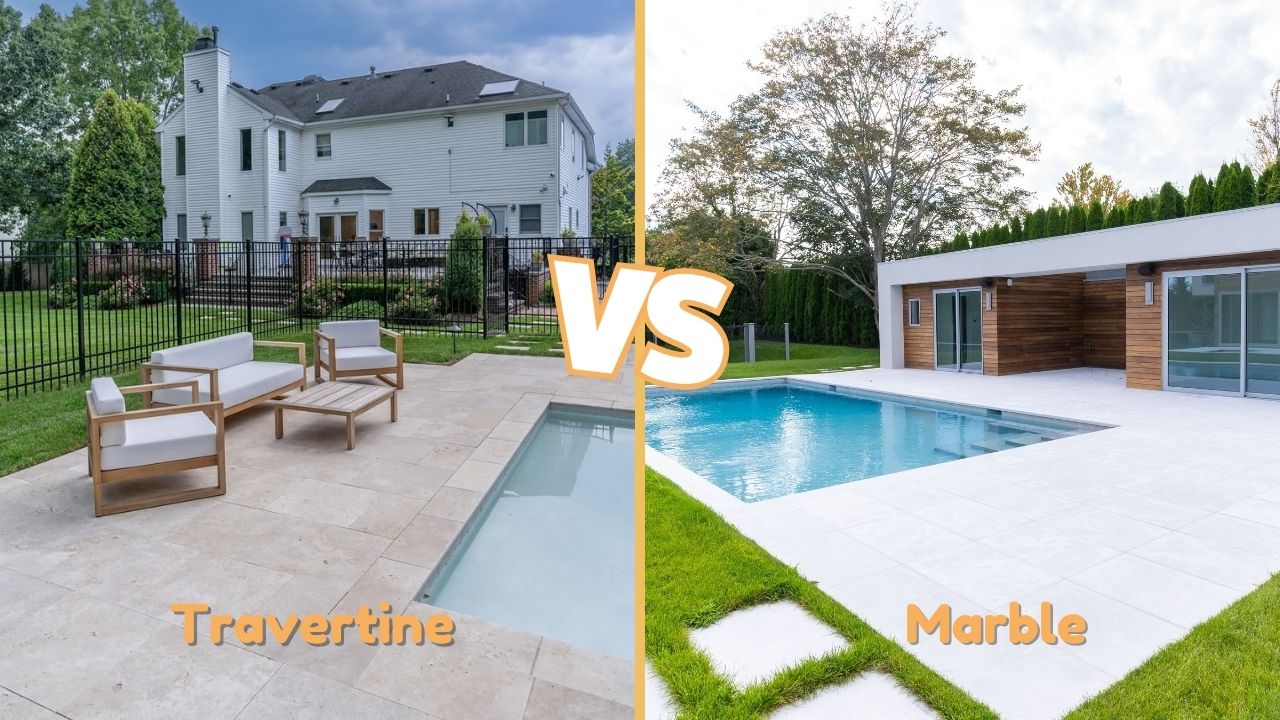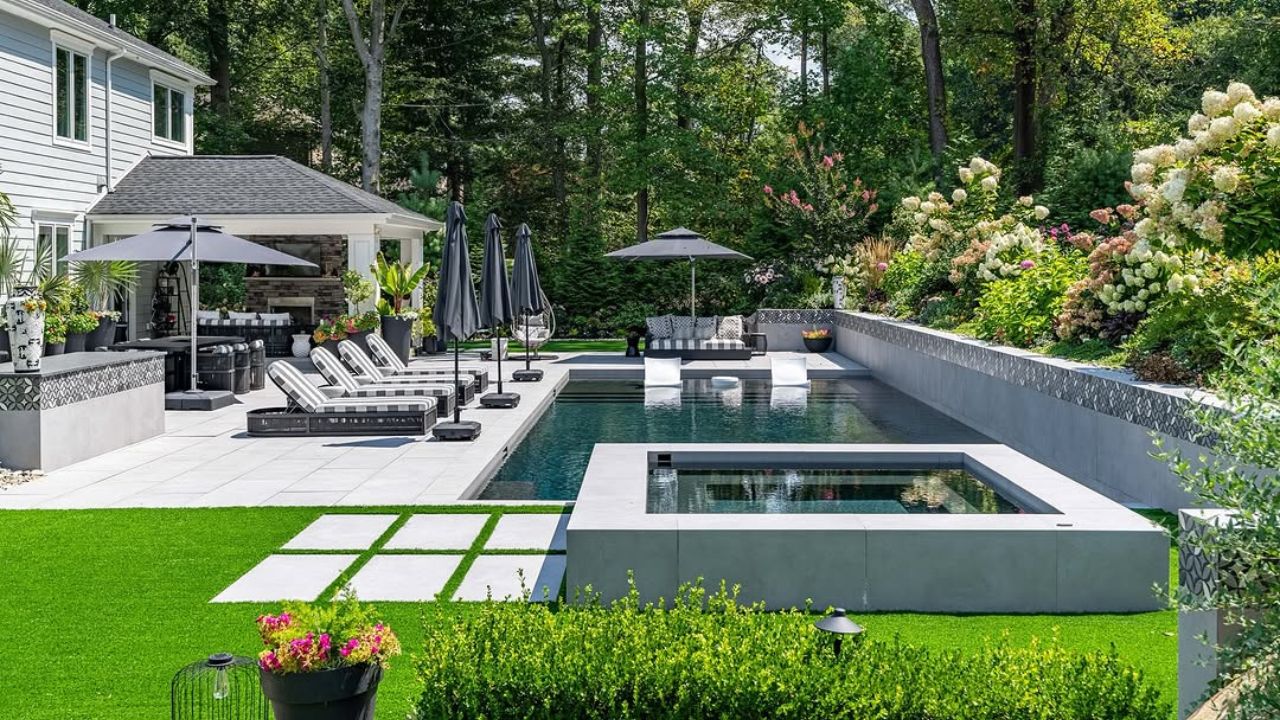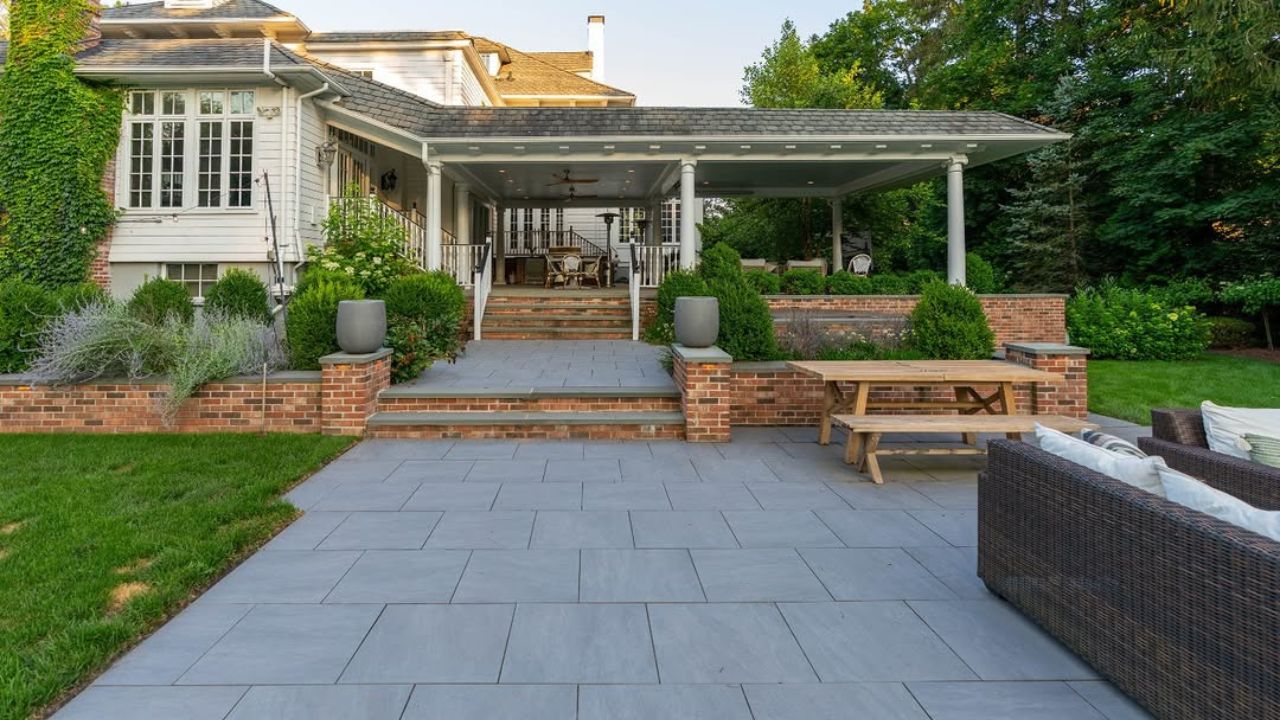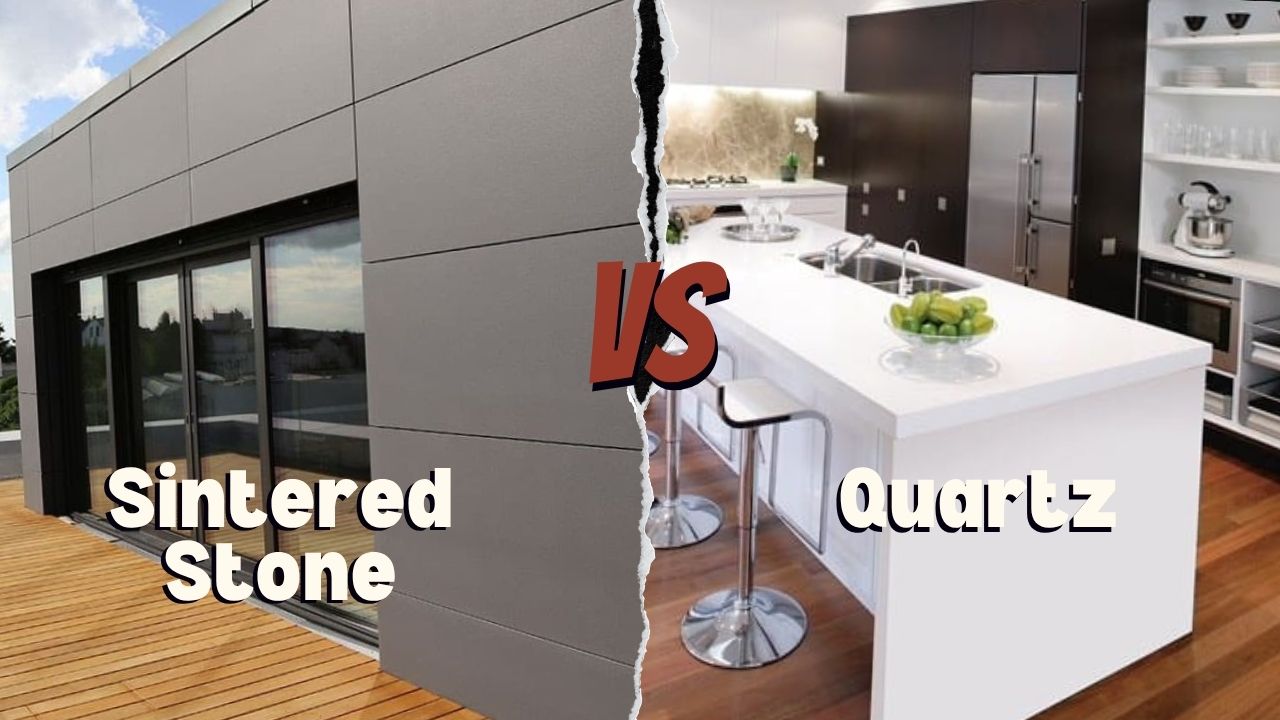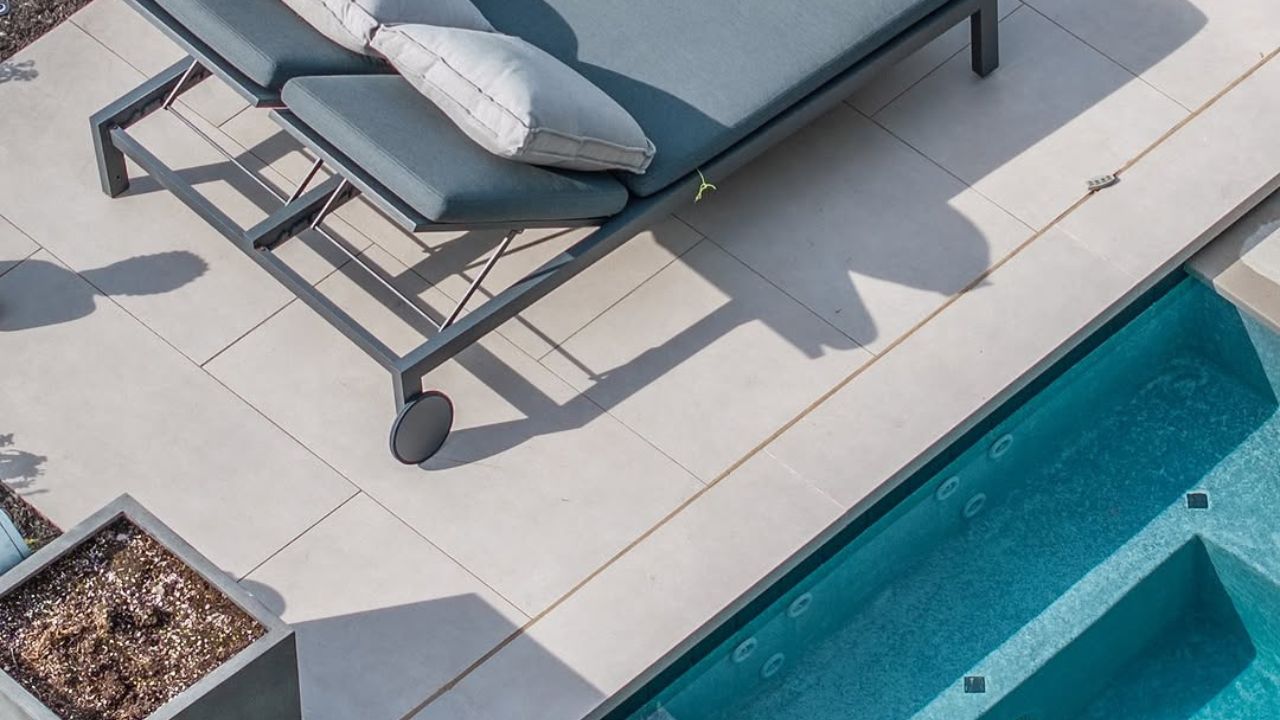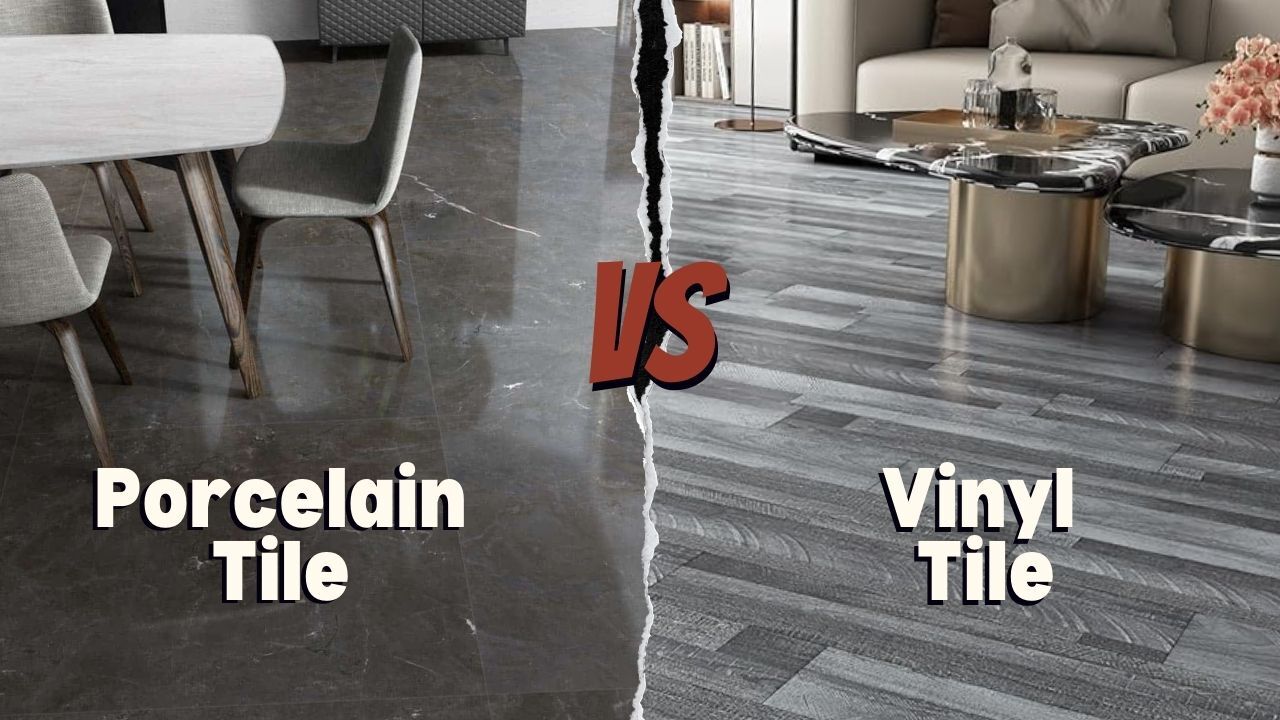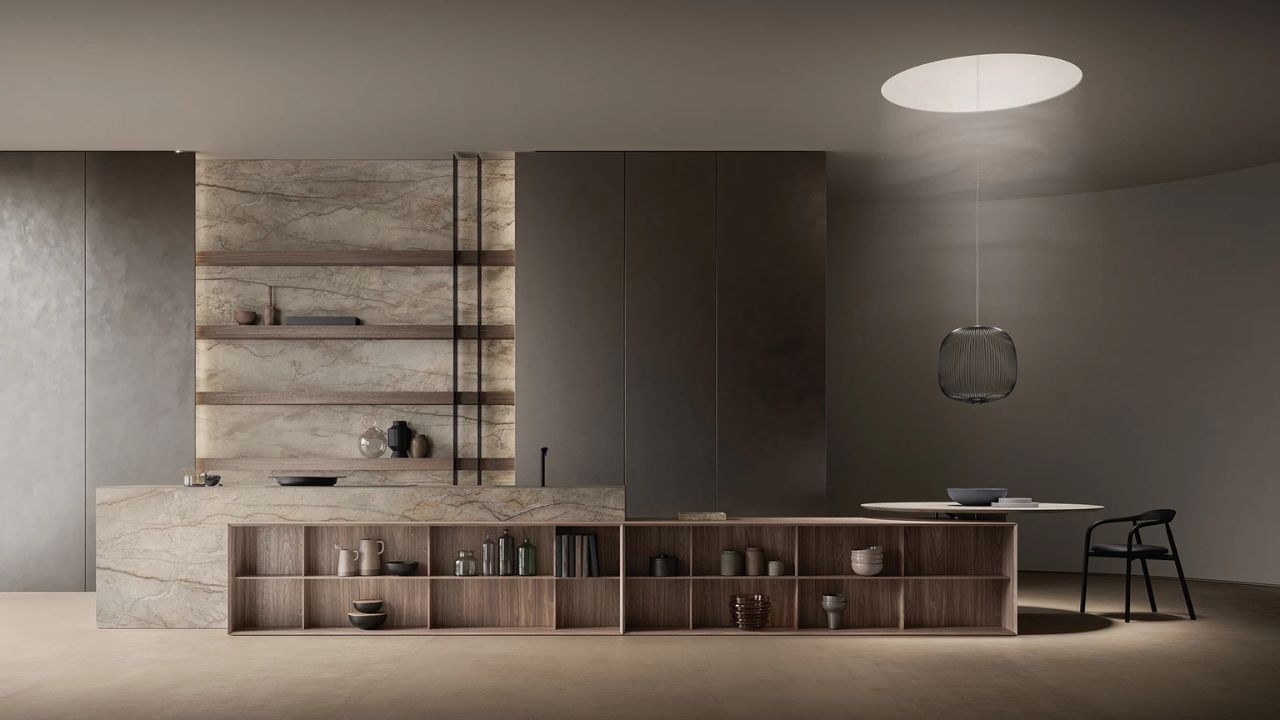When it comes to choosing between travertine vs marble then it is not just about looks, you need to consider their practical use as well. Travertine and marble of the stones look stunningly beautiful, but work differently under pressure, durability, maintenance, and several other conditions. Choosing the material that is more practical matters a lot for long-term use. Here is a detailed comparison between travertine vs marble to find the most practical option for you.
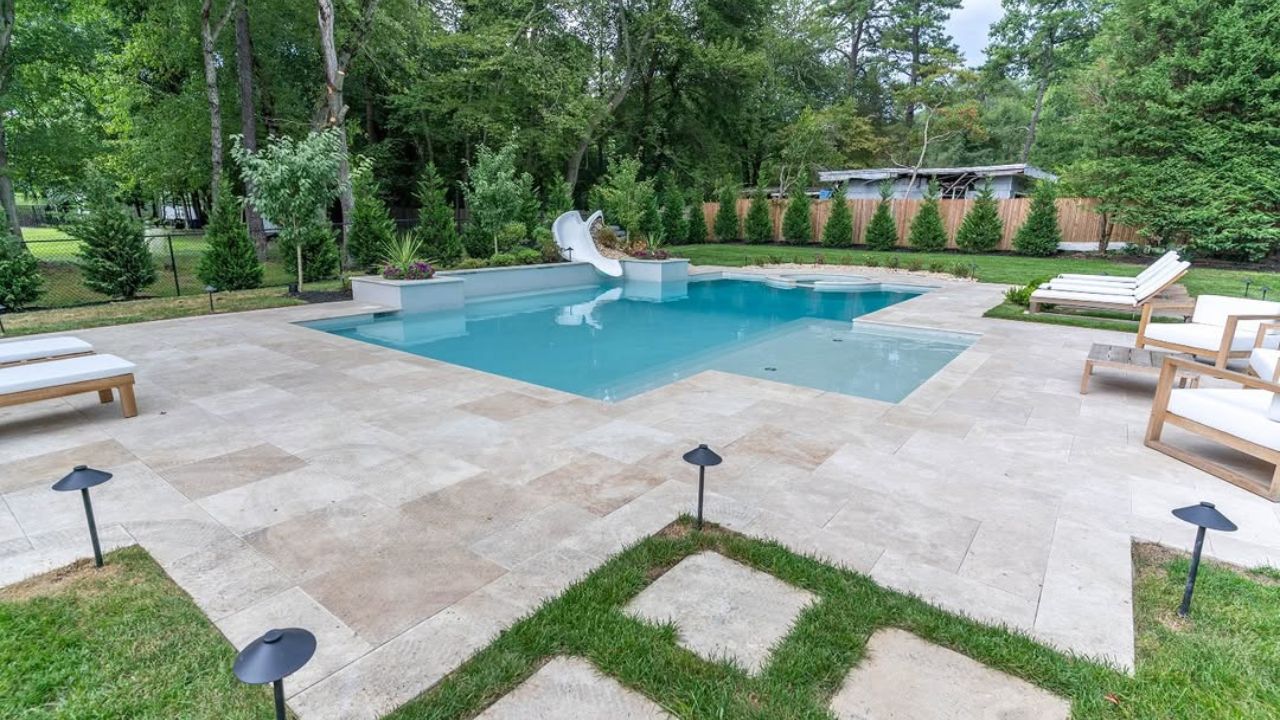
Overview of Travertine and Marble
Let’s have an overview of both of these materials to have a better idea. Both travertine and marble are natural stone pavers, but have different origins, finish types, and applications.
| Travertine | Marble |
| It is a sedimentary rock and is generally found in the form of limestone deposits in mineral hot springs | Commonly formed from recrystallized limestone under intense pressure |
| Finishes include tumbled, honed, brushed, and filled/unfilled | Popular finishes include polished, honed, brushed, and leathered |
| Commonly used around pool decks, on patios, walkways, interior floors, and shower walls | Most suited for bathroom floors, shower areas, countertops, fireplace surrounds, and formal entryways |
Travertine vs Marble: Practicality Comparison
To determine the most practical option between travertine pavers and marble pavers, you should understand the difference between marble and travertine that influences long-term performance, safety, maintenance, and cost. Here are the major factors to consider when evaluating the practicality between Travertine vs Marble:
- Durability and Scratch Resistance
- Slip Resistance (Especially When Wet)
- Weather and Moisture Tolerance
- Maintenance Requirements
- Sealing Frequency and Stain Susceptibility
- Installation Method and Versatility
- Surface Texture and Safety
- Cost of Material and Installation
- Suitability for Indoor vs Outdoor Use
- Weight and Handling During Installation
- Aesthetic Goals and Design Flexibility
- Availability and Sizing Options
- Performance in Freeze-Thaw Climates
- Long-Term Aging and Wear Visibility
- Resale Value and Buyer Appeal in Specific Spaces
| Factor | Travertine | Marble |
| Durability | Moderate to high; resists foot traffic well | Softer, prone to scratching and surface wear |
| Slip Resistance | High (especially with tumbled/brushed finish) | Low when polished, honed options offer a slight grip |
| Moisture Tolerance | Performs well in damp/outdoor settings when sealed | Susceptible to water stains and etching |
| Weather Resistance | Freeze-thaw safe when dry-set and sealed properly | Not recommended for exposed outdoor use |
| Maintenance | Low to moderate; regular sealing maintains performance | High needs frequent sealing and gentle cleaning |
| Stain Resistance | Acceptable when sealed; naturally conceals light stains | Easily stained by oils, wine, and acids |
| Sealing Frequency | Every 1–2 years (indoor); annually for high-exposure areas | More frequent, at least every 6–12 months |
| Installation Flexibility | Can be dry-set or mortar-set; good for patios and pool decks | Requires mortar-set installation; limited to interior or protected spaces |
| Surface Texture Options | Tumbled, brushed, honed; naturally slip-resistant | Mostly polished or honed; polished is slippery |
| Cost (Material & Labor) | Travertine costs less, is easier, and less expensive to install | Higher cost, heavier, and more labor-intensive |
| Indoor Use Suitability | Excellent for kitchens, baths, and living rooms | Best for low-traffic interior areas or decorative use |
| Outdoor Use Suitability | Highly suitable for patios, pools, and driveways | Poor—may stain, crack, or become slippery |
| Weight & Handling | Lighter, easier to cut, and transport | Heavier, more fragile during transport and installation |
| Design Aesthetic | Earthy, warm, rustic, Mediterranean look | Sleek, elegant, high-gloss luxury finish |
| Aging & Wear Visibility | Ages gracefully; hides wear naturally | Surface wear is highly visible |
| Resale Appeal | High for outdoor features and practical areas | High in luxury interiors and polished focal points |
Travertine tile, travertine pavers, and travertine slabs are a practical choice between travertine vs marble when it comes to durability, functionality, and cost efficiency, especially for outdoor applications. They work best for travertine floor projects, pool areas, offering better grip and a surface with better thermal management properties (stays cool under feet). They can withstand heat and pressure throughout the seasons.
On the other hand, if you like to add a visual value with refined interiors, then marble type of stone with veining texture and a wide range of paver color options. However, marble is only suited to areas and interiors with controlled wear and moisture. See our guide on how to clean marble properly to maintain its shine and avoid etching or staining.

Travertine vs Marble FAQs
Here we will answer some of the most common questions related to travertine and marble.
Which lasts longer, travertine or marble?
Travertine typically lasts longer, even in wet or outdoor settings, because it is less prone to damage from moisture and wear. However, both stones can last decades with proper care.
Is travertine good for indoor floors?
Yes. Travertine is ideal for interior floors, especially in kitchens, living rooms, or bathrooms. Use honed or brushed finishes for added comfort and slip resistance.
Is marble good for outdoors?
It is not recommended to use marble outdoors. It is prone to fading, water stains, and slipperiness when used outdoors, especially in uncovered areas.
Which stone is easier to clean?
Travertine is easier to clean. Just make sure to use a neutral stone cleaner or mild Use a neutral stone cleaner or mild soap. Marble requires special pH-neutral products and more caution.
Does travertine stain easily?
Yes. Travertine is porous but hides minor stains well. With sealing, it resists most spills.
Conclusion
Travertine is clearly a practical choice between marble vs travertine. For homeowners and project managers looking for natural stone with good finishing and durable performance, travertine. It can withstand everyday use, outdoor projects, and moisture-prone areas. Also, it can stay cool underfoot, making it a good option for the pool area and low maintenance. It is more cost-effective, making it ideal for real-world living. However, marble is ideal for adding visual appeal with a luxurious appearance and natural elegance. But it is not good for high traffic or wet areas. Choose travertine when you want reliability, comfort, and timeless character that works as hard as it looks good.
Remember, for long-term use, go for the stone option that offers better performance in real-world scenarios, so you know your money is well spent. Whether it is travertine pavers or marble tiles, head to NT Pavers and select from the wide range of collections that suit your project’s requirements.

